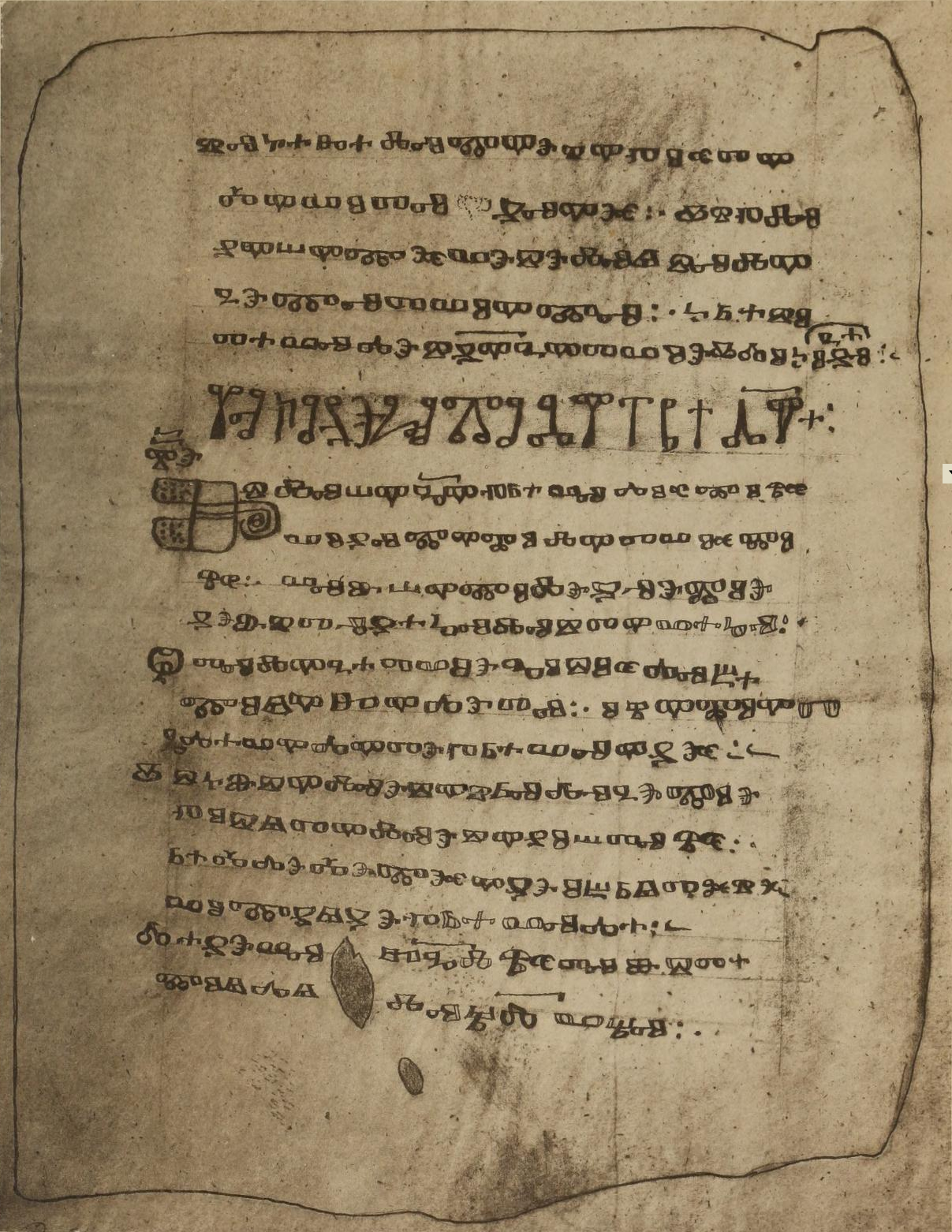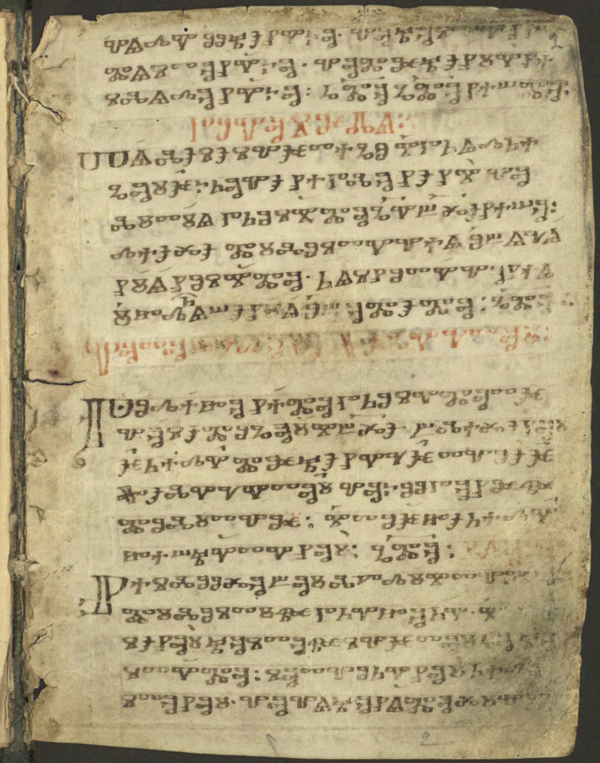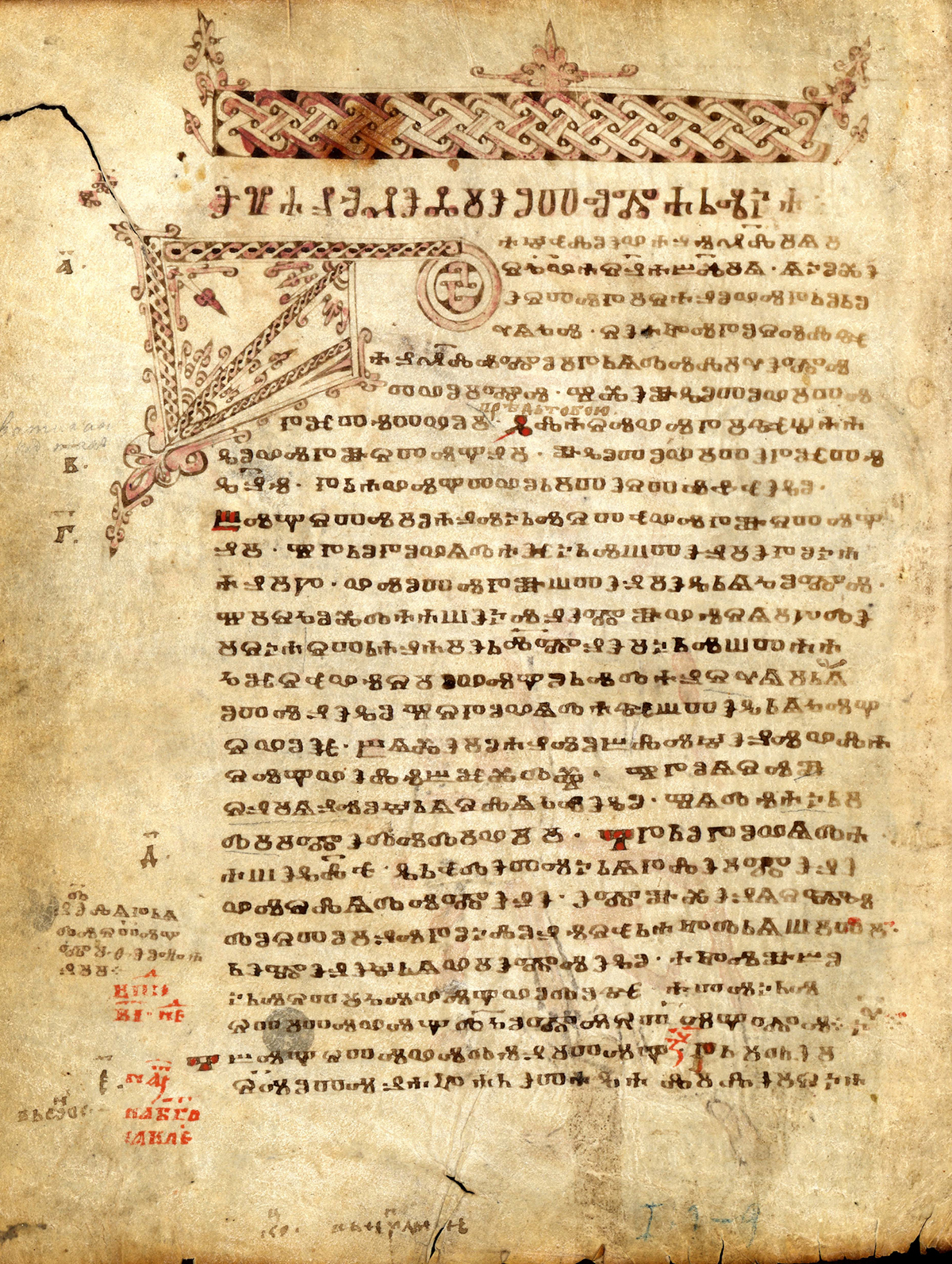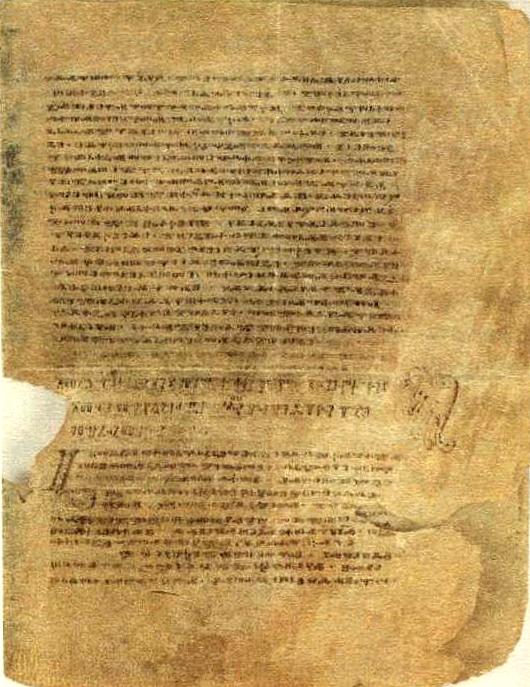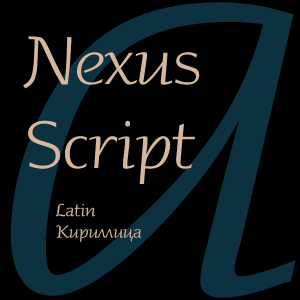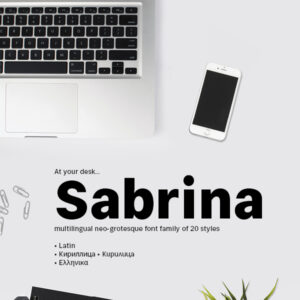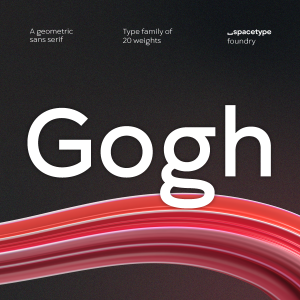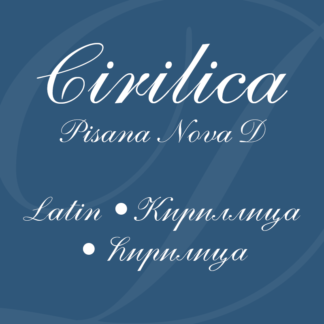Codex Assemanius
Codex Assemanius is a rounded Glagolitic Old Church Slavonic canon evangeliary consisting of 158 illuminated parchment folios, dated to early 11th century. The manuscript is of Macedonian provenience of the First Bulgarian Empire.
Source: Wikipedia
Please click the picture to look inside the book.
Psalterium Sinaiticum
The Psalterium Sinaiticum is a 209-folio Glagolitic Old Church Slavonic canon manuscript, the earliest Slavic psalter, dated to the 11th century. The manuscript was found in Saint Catherine’s Monastery in Egypt, after which it was named and where it remains to this day.
Source: Wikipedia
Please click the picture to look inside the book.
The Kiev Missal
Dating from the second half of the tenth century, the Kiev Missal is generally held to be the oldest Old Church Slavic manuscript with a coherent text. The manuscript is a seven-folio text in Glagolitic script that contains parts of a Roman-rite missal (Sacramentarium), a book of texts used by a priest during mass. Written in three different hands, it includes a reading from the Epistle to the Romans by the Apostle Paul (Chapter XIII, verses 11-14 and Chapter XIV, verses 1-4), a prayer to the Blessed Virgin from the Annunciation service, and various prayers from the mass.
Source: World Digital Library
Please click the picture to look inside the book.
The Krtíš Glagolitic Fragment
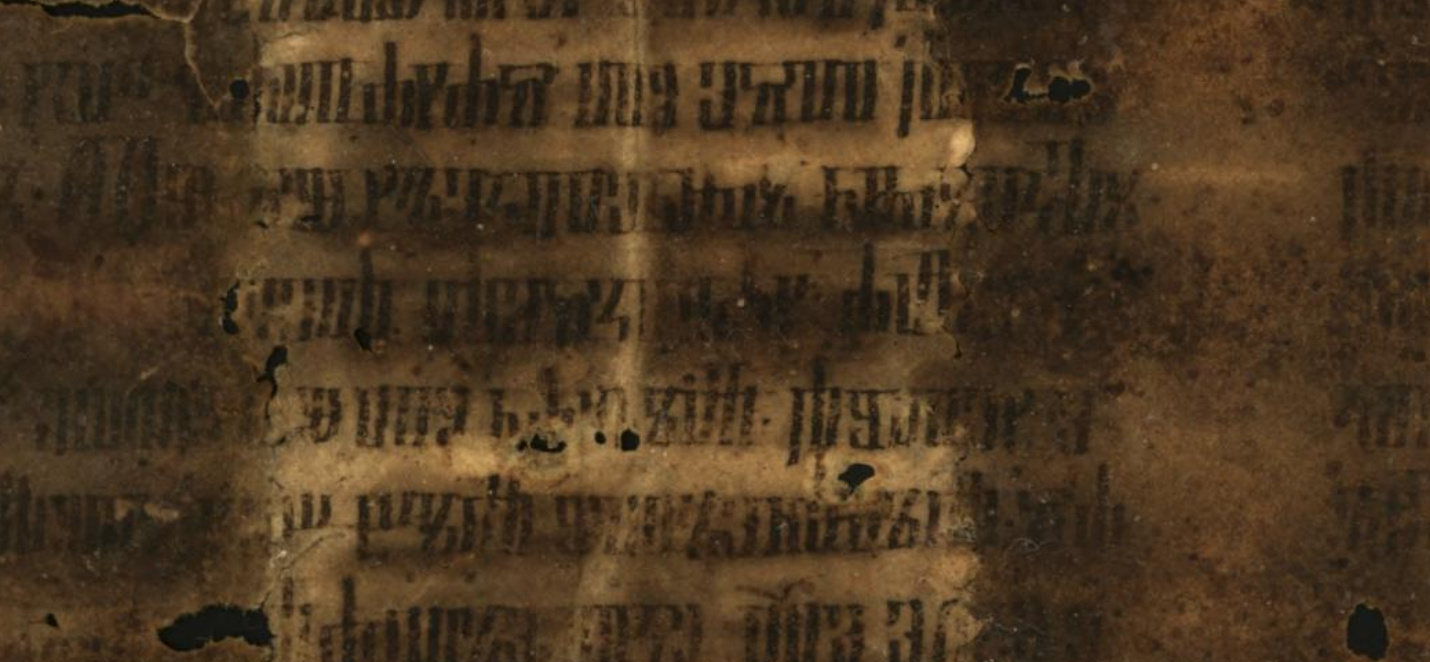
This manuscript fragment contains part of an explanation of an unknown gospel. It was at one time bound into a Glagolitic copy of the manuscript book Historia Scholastica by Peter Comestor. The text of the fragment was written in the angular Glagolitic script invented during the ninth century by Saints Cyril and Methodius to translate the Bible and other ecclesiastical works into the language of the Great Moravia region. Around 1633 the folio was used to fill the book binding of the Czech translation of Pastorale Lutheri (The pastoral of Luther) by Conrad Porta. It was discovered by Samuel Zoch (1882–1928) in the Kálmár family library in the town of Veľký Krtíš in southern Slovakia. Samuel Zoch’s brother, Ivan Branislav Zoch, gave the text to Professor Vatroslav Jagič (1838–1923), one of the founders of the field of Croatian linguistic studies. Jagič proved the authenticity of the parchment and hypothesized that it was brought to the historical territory of Slovakia by Czechs living in exile after the Battle of White Mountain (1620). In 1930, Professor František Ryšánek (1877–1969) announced that the manuscript dated back to the turn the 15th century and indicated the Emmaus Monastery in Prague (the monastery of Croatian Benedictines at Slovany) as the place of the origin.
Source: World Digital Library
Please click the picture to look inside the book.
Glagolitic Leaves in Hlohovec

These two fragments are among the oldest artifacts in the manuscript collections of the Slovak National Library. They are parchment folios, written on both sides, and are of Croatian provenance. It is believed that they came to the territory of Slovakia through the Franciscan friars or by the exchange of codices and printed books among Franciscan libraries or archives. They were discovered at the library of the former Franciscan monastery in Hlohovec in southwestern Slovakia in 1936. The folios contain parts of the Glagolitic service book from the end of the 13th century or early 14th century, and were preserved in the Italian book binding of a copy of Trattato dell’amore di Dio (Treatise on the love of God, Venice, 1642) by Saint Francis de Sales. Old Church Slavonic text is written in Croatian Glagolitic of the older type. The sheets contain the masses De communi apostolorum (Of the community of apostles) and De communi martyrum (Of the community of martyrs). Although there remain no autographs from the period of the Great Moravian Empire (circa 800-circa 900), it is likely that these texts derive from the ninth century, mediated by Glagolitic and Cyrillic transcripts from 11th century and later. The manuscript is decorated only by the scribal initials. Glagolitic refers to the alphabet invented during the ninth century by Saint Cyril and Saint Methodius to translate the Bible and other religious works into the Slavic language spoken in the region of the Great Moravian Empire.
Source: World Digital Library
Please click the picture to look inside the book.
Codex Zographensis
The Codex Zographensis (or Tetraevangelium Zographense; scholarly abbreviation Zo) is an illuminated Old Church Slavonic canon manuscript. It is composed of 304 parchment folios; the first 288 are written in Glagolitic containing Gospels, and the rest written in Cyrillic containing a 13th-century synaxarium. It is dated at late 10th or early 11th century.
Source: Wikipedia
Source of Glagolitic texts: Wikiteka
Please click the picture to look inside the book.
Codex Marianus
The Codex Marianus is an Old Church Slavonic fourfold Gospel Book written in Glagolitic script, dated to the beginning of the 11th century, which is (along with Codex Zographensis), one of the oldest manuscript witnesses to the Old Church Slavonic language, one of the two fourfold gospels being part of the Old Church Slavonic canon.
Source: Wikipedia
Please click the picture to look inside the book.
Glagolita Clozianus
The Glagolita Clozianus is a 14-folio Glagolitic Old Church Slavonic canon miscellany, written in the eleventh century. Presumably manuscript was copied on the Croatian territory from the original written in Macedonia.
Source: Wikipedia
Please click the picture to look inside the book.
Saint-Antonian Glagolitic Fragment
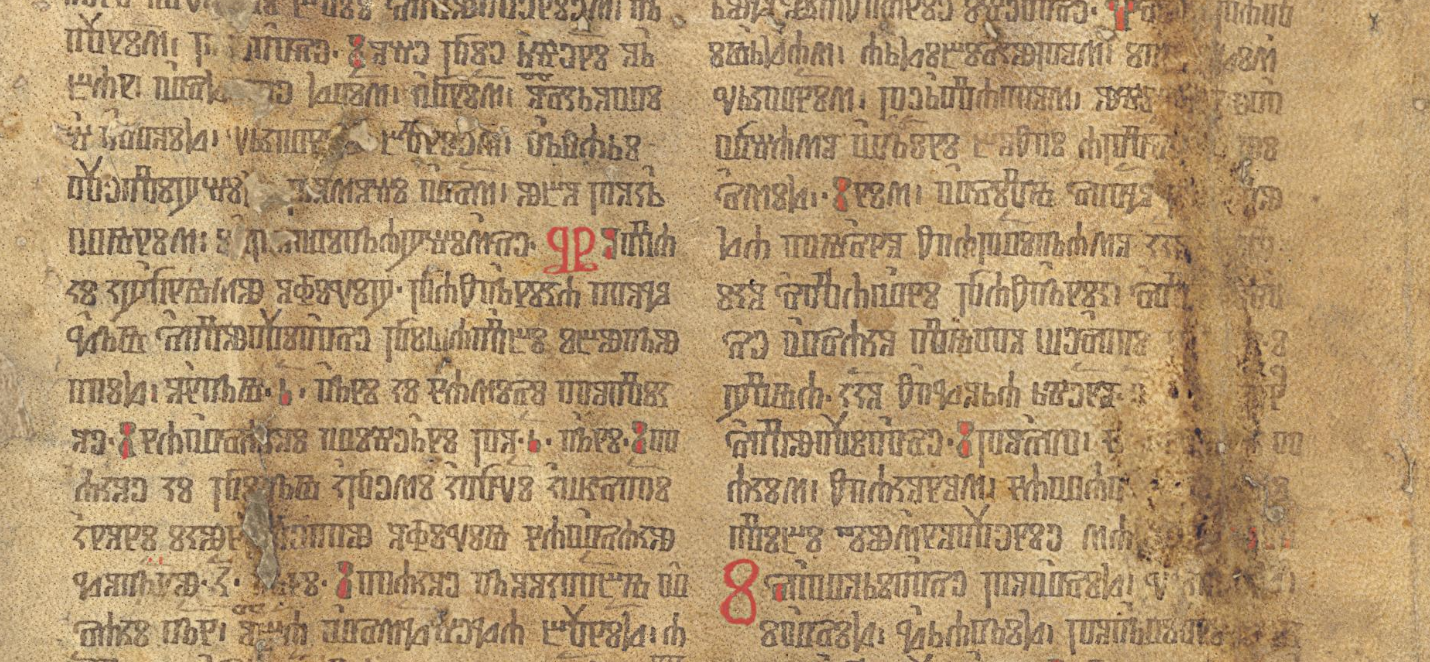
The Saint-Antonian Glagolitic Fragment is the name of a double-folio parchment, probably of Croatian provenance, i.e., from the territory of the southern Slavs, where the students of Saint Methodius (815‒85) took refuge after the fall of Great Moravia. Produced by an unknown scribe in the 15th century, it contains text written in two columns with black and red ink using square Glagolitic script. It was probably part of a liturgical book, perhaps a Glagolitic breviary. In the 17th century this goat parchment was used as part of a book binding. It was discovered in this form in the mid-20th century by historian of book culture and bibliographer Dr. Vševlad Jozef Gajdoš in the Franciscan monastery in Saint Anton (present day Báč, in southwestern Slovakia). Great Moravia was a Slavic kingdom established in the ninth century in territories comprising the present-day Slovak and Czech republics, part of southern Poland, and the western part of present-day Hungary. Rostislav (also seen as Rastislav), who ruled from 846 to 870, invited the Byzantine missionaries Cyril and Methodius to the kingdom to spread Christianity. The brothers introduced the Slavonic liturgy, based on their own translations from the Greek, and the Glagolitic script for writing Slavic languages. Great Moravia weakened and fell into disunion late in the century, following the death of Rostislav’s successor, his nephew Svatopluk (reigned 870–94), and finally was destroyed by a Magyar attack in around 906.
Source: World Digital Library
Please click the picture to look inside the book.
Other sources
Karl Adolph Constantin Höfler, Paul Joseph Safarík: Glagolitische Fragmente
Jagić, Vatroslav: Gradja za glagolsku paleografiju
Sreznevskiĭ, I. I. (Izmail Ivanovich): Drevnīe glagolicheskīe pami͡atniki, sravnitelʹno s pami͡atnikami kirillit͡sy
Jagi, V. (Vatroslav): Quattuor evangeliorum Codex glagoliticus olim Zographensis nunc Petropolitanus. Characteribus cyrillicis transcriptum notis criticis prologomenis appendicibus auctum adiuvante summi ministerii Borussici liberalitate edidit V. Jagi
Croatian History: Croatian Glagolitic Script
Wikipedia: Glagolitic script
Wikipedia: Старобългарски писмени паметници
Transliterator: Transliterator from Cyrillic to Glagolitic and vice versa (BG interface)
Slavonic written heritage: Manuscripts
Wikisource: Codex Zographensis
Wikisource: Codex Marianus
Psalterium Demetrii Sinaitici: Electronic edition
Jouku Lindstedt: Titus Collections: Codex Assemanianus
Wikipedia: Cyrillic parchment books and sheets
Palaeography
Екатерина Кислова: Палеография, библиография и история книги
If you like this site and find it useful, help us to make it better by giving feedback, suggesting improvements or by donation.



